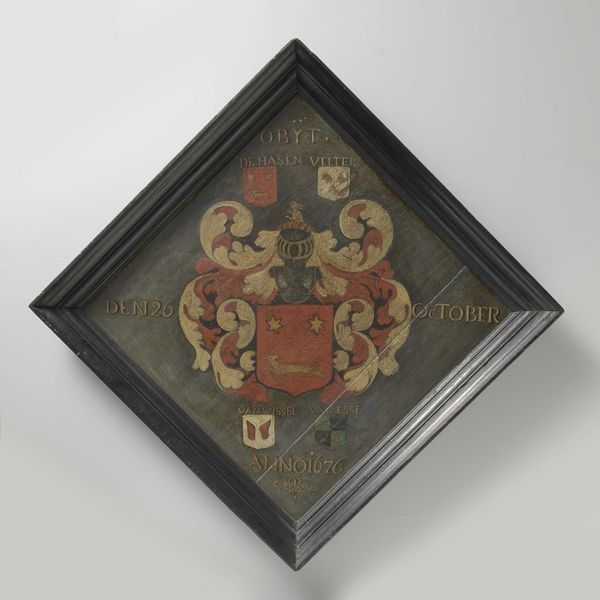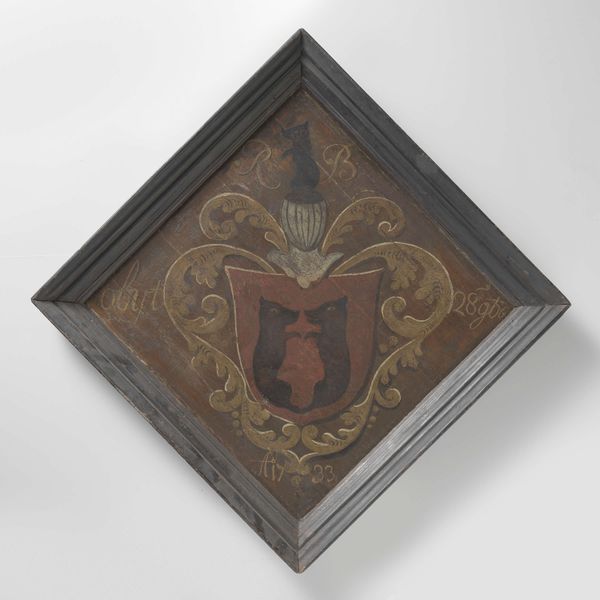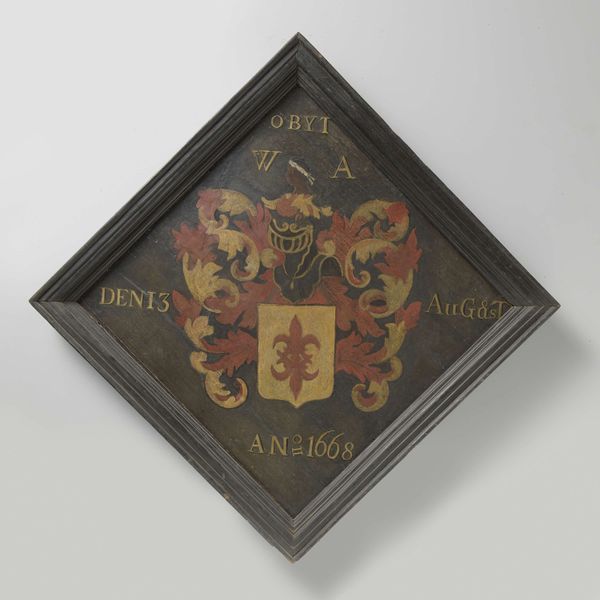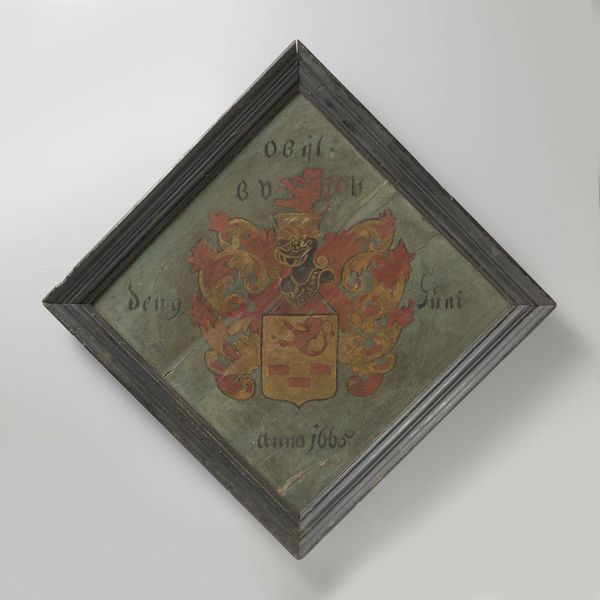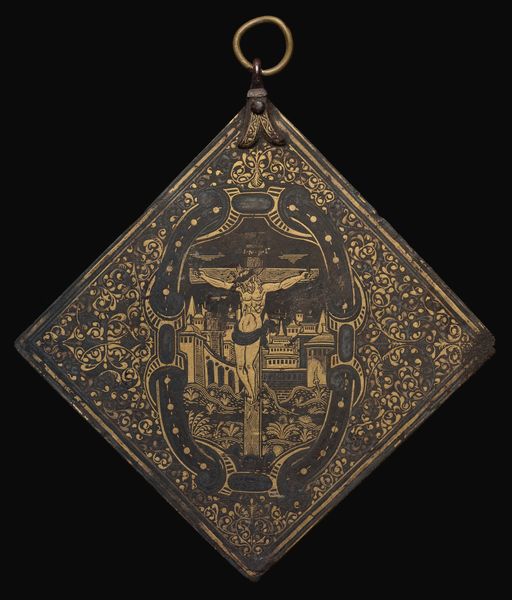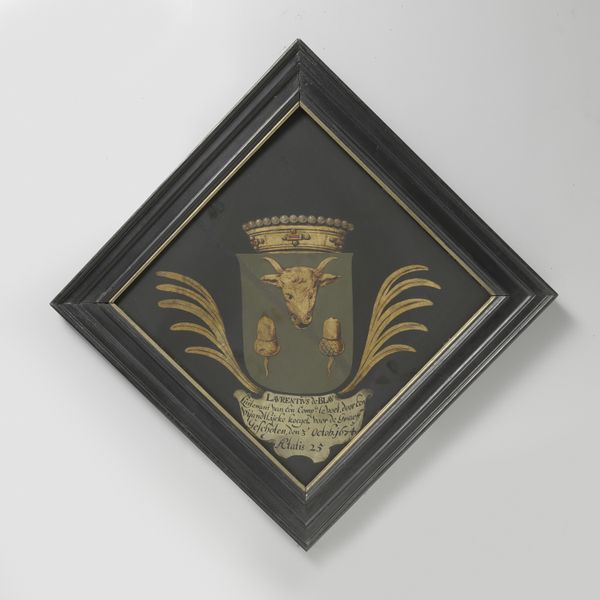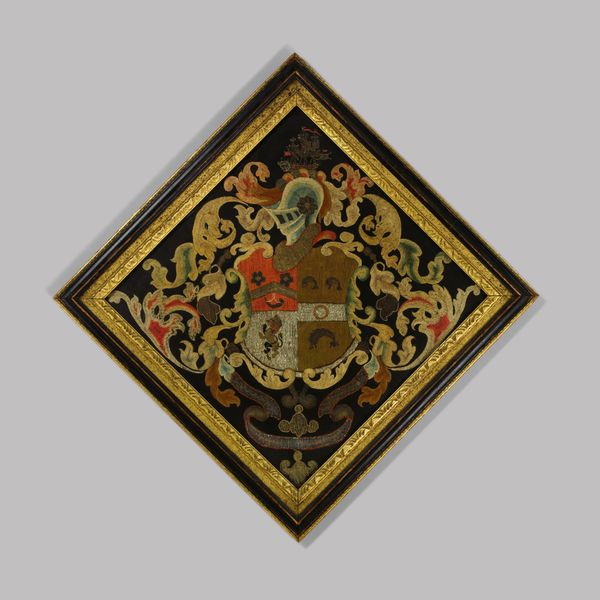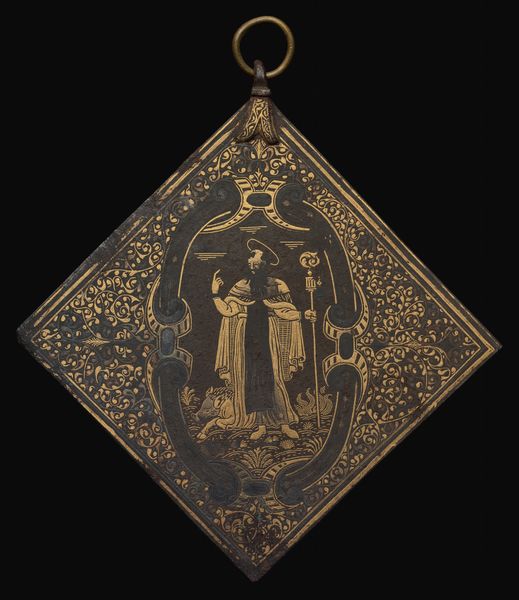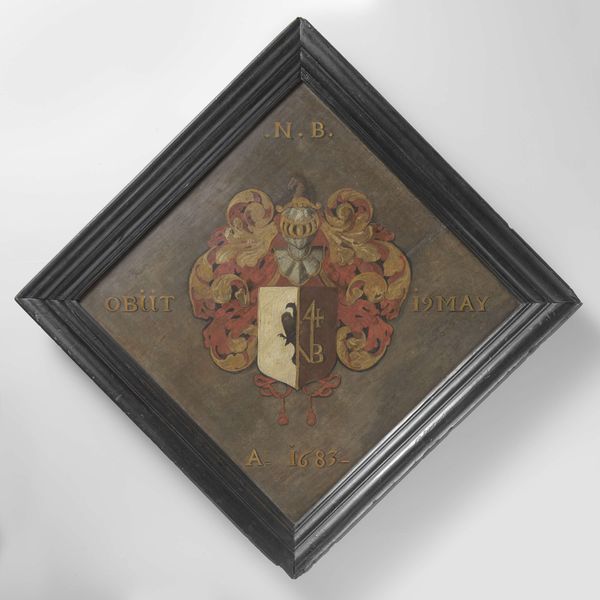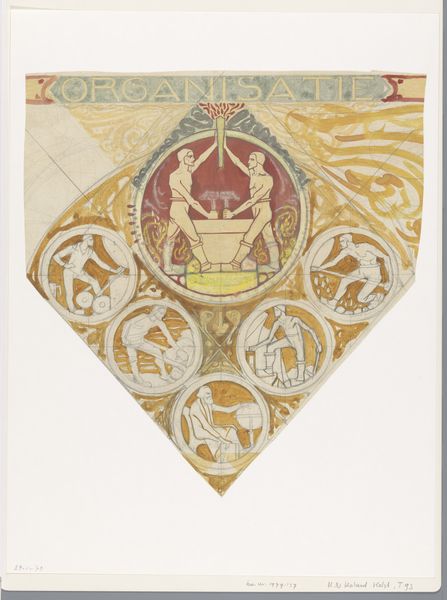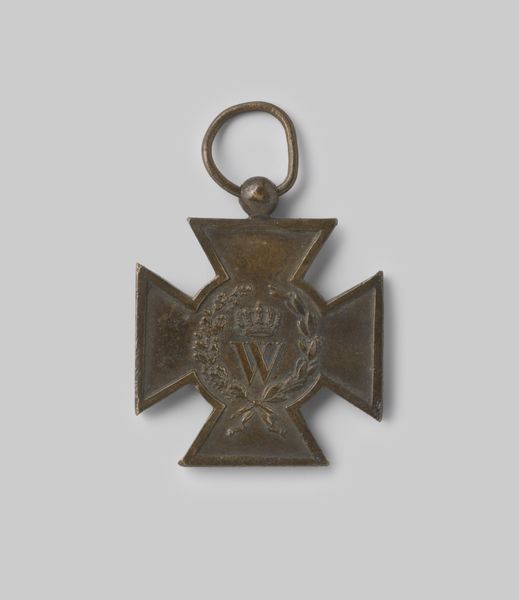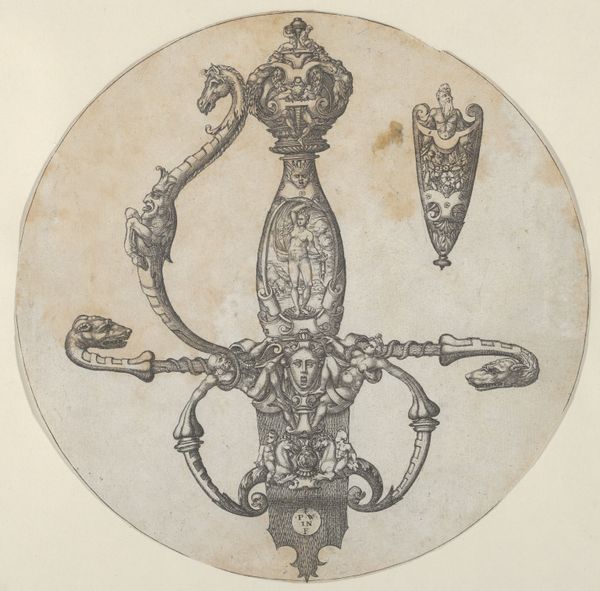
Grafbord van Marten Huysman (gestorven 1685), directeur van Bengalen (1683-85) after 1767
0:00
0:00
Dimensions: height 125 cm, width 129 cm, depth 3 cm
Copyright: Rijks Museum: Open Domain
Curator: Hmm, it's definitely striking! Gives off a peculiar sense of solemn history, doesn't it? Editor: Indeed. What we're looking at here is referred to as a hatchment, or "Grafbord" in Dutch, commemorating Marten Huysman, who died in 1685, director of Bengal from 1683 to 1685. But this particular piece was painted after 1767. Curator: Interesting! Painted after…so it's a historical echo, a representation after the fact, almost like keeping a story alive. The formal arrangement of this baroque composition with this lozenge format...makes me think it used to hang prominently somewhere. The weight of remembrance and the impermanence of our mortal existence is palpable. Editor: The composition centers on the heraldic shield. Consider the visual language at play; each color, shape, and symbol within the shield signifies something specific about Huysman's lineage and status. These armorial bearings were meant to project authority and nobility. Curator: Makes you wonder what Bengal was like in his day, you know? What he actually *did* over there. Bengal conjures images of color, spice, vast lands—all reduced here to these shapes and colors. It’s strangely distancing, a flat symbol standing in for the messy, beautiful reality. Editor: Consider the Baroque artistic features—ornamentation, a dramatic use of shadow, a sort of symbolic display of prestige and lineage, all condensed within this somewhat compressed pictorial field. Curator: I wonder what sort of person would create a baroque image after the death of a colonial director. Was this ordered by family to remember him with honor and maybe some sadness? Did this hang in a somber place as a sort of meditative piece? Or did the artist enjoy historical or symbolic renderings and create something for pleasure or honor? The possibilities are rich! Editor: Well, beyond that, there is also its intrinsic aesthetic value. Consider the interplay of light and shadow. Notice how the dark ground emphasizes the chromatic qualities of the paint and ornate design and the texture created by using oil on wood. Curator: So, looking back, it started out looking dark and serious. But dissecting the symbolic history reveals layers of narrative complexity, which is kind of hopeful. What do you think? Editor: I agree, initially imposing with baroque, now it provokes one to consider questions related to art, coloniality, status, lineage, and history.
Comments
No comments
Be the first to comment and join the conversation on the ultimate creative platform.
